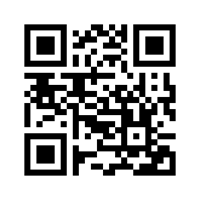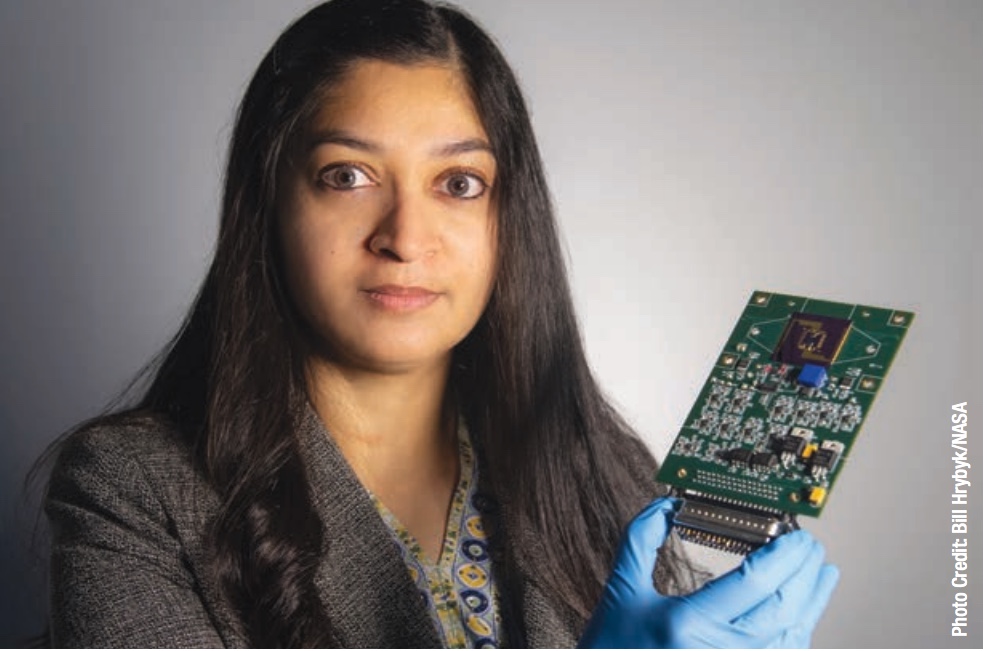
Goddard Space Flight Center, Greenbelt, Maryland 20771
ENGINEERING COLLOQUIUM
Monday, May 13/ 3:30 PM, Building 3 Auditorium

Mahmooda Sultana
"Quantum Dot-based Miniaturized Multispectral Imager for Space Applications"
ABSTRACT -- We are developing an ultra-compact, low mass, and low-cost multispectral imager based on an innovative concept of Quantum Dot Array (QDA). The QDA acts as an absorptive filter array, and replaces prisms and gratings that require long path length to achieve high spectral resolution. The QDA is directly integrated with a detector array to form a highly compact multispectral imager.
This quantum dot spectrometer also provides the benefit of customizing the wavelength and bandwidth to only the spectral features of interest, to maximize signal to noise performance. The sample images are mathematically reconstructed using the characteristic response of each of the filters and measurements made by the instrument, based on the wavelength multiplexing principle.
The compactness of this potentially revolutionary technique makes it a suitable instrument for small satellite missions for a range of science applications, including auroral imaging, mapping of water and hydroxyl in lunar regolith, spectroscopy of the atmosphere or the surface of planetary bodies such as Venus and Mars, studying volatiles in comet comae, glaciological mapping, and imaging ocean color to understand ocean biogeochemistry and the ecosystem.
SPEAKER -- Mahmooda Sultana received her Ph.D in Chemical Engineering from Massachusetts Institute of Technology and B.Sc. in Chemical Engineering from the University of Southern California with Summa Cum Laude.
She joined the Detector Systems Branch at NASA Goddard Space Flight Center in 2010, where she worked in the Detector Development Laboratory (DDL) to develop advanced semiconductor devices, including x-ray detectors and Micro-Electro-Mechanical Systems (MEMS) such as the Microshutter Array for James Webb Telescope. In addition, she led the development of nanomaterial-based sensors, which offer high sensitivity while significantly reducing the resource footprint, for future space missions. As a participant of the Science and Engineering Collaboration Program (SECP), Mahmooda worked on several Heliophysics small satellite mission proposals as the Instrument Systems Engineer.
She served as the Associate Branch Head at the Detector Systems Branch from 2016 to 2017, where she provided technical and administrative supervision for flight projects and technology development efforts in the branch, along with continuing to lead nanomaterial-based sensors work. She joined the Instrument/Payload Systems Engineering Branch as the Associate Branch Head in 2017, where she provides technical and administrative supervision for the instrument systems engineering work for flight projects, manages the SECP program, and develops instruments.
Her awards include 2017 GSFC Innovator of the Year, NASA Early Career Achievement Medal, ISTD New Achiever Medal, Bell Laboratories Research Fellowship, and William C and Margaret H Rousseau Fellowship at MIT.
Colloquium Committee Sponsor: Lyudmyla Panashchenko
Engineering Colloquium home page: https://ecolloq.gsfc.nasa.gov